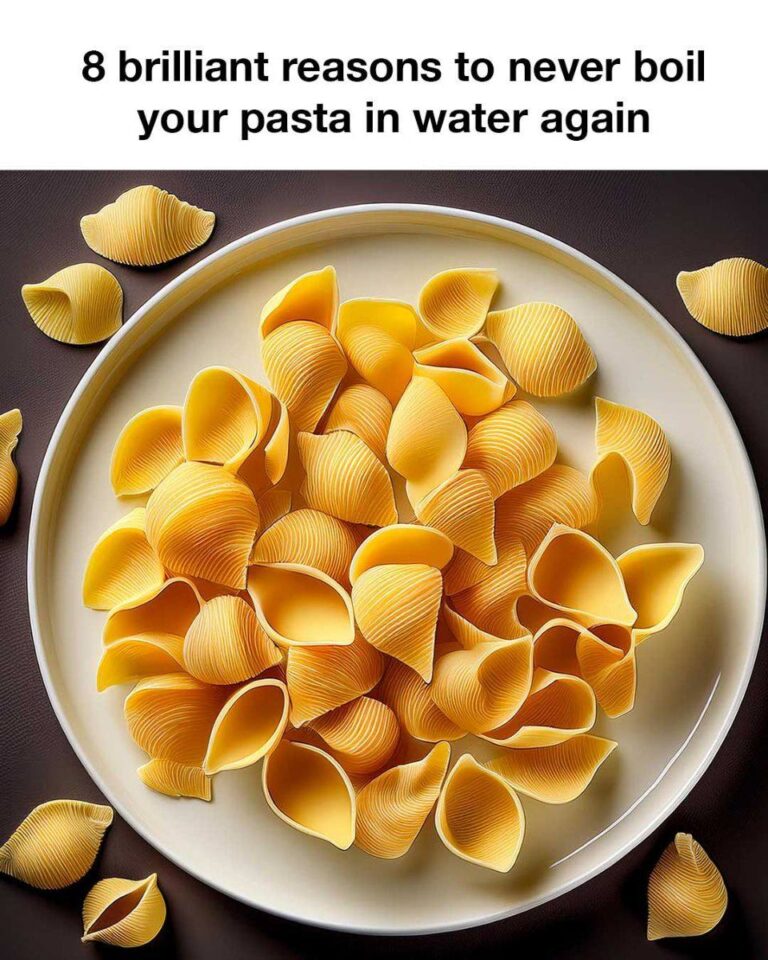ADVERTISEMENT
For generations, boiling pasta in water has been the default method in kitchens around the world. But what if we told you that boiling pasta in water might not be the most exciting—or even the best—way to cook it? As cooking techniques evolve, there are smarter, more flavorful, and energy-efficient ways to prepare pasta.
Cooking pasta directly in sauces or using alternative liquids can enhance your dishes and streamline your kitchen routine. If you’re ready to elevate your pasta game, here are eight brilliant reasons to never boil your pasta in water again.
1. Boost Flavor by Cooking Pasta in Sauce
When you cook pasta directly in your sauce, the pasta absorbs the flavors as it cooks. This method is especially great for dishes like spaghetti Bolognese or marinara because the pasta becomes infused with the delicious richness of the sauce. Instead of boiling pasta in plain water and then mixing it with the sauce later, cooking it together results in more cohesive and flavorful meals. No more diluted sauces or pasta that feels disconnected from the dish—it’s all cooked together for a tastier bite.
How to do it: Start with a small amount of sauce in a wide pan, dilute it slightly with broth or water, and let the pasta cook in the mixture until tender. Stir often to prevent sticking, and keep adding liquid as needed.
2. Save Water and Energy
Traditional pasta cooking requires a large pot of boiling water, which can take time to heat and waste a lot of water. By skipping the boiling process and cooking pasta directly in sauces or other liquids, you not only conserve water but also reduce energy consumption. This is a great step toward a more sustainable kitchen practice.
How to do it: If you’re cooking pasta in broth or sauce, you typically only need enough liquid to submerge the pasta. As it simmers, you’ll use less energy compared to bringing a pot of water to a rolling boil.
3. Enhance Texture with a Risotto-Like Method
Cooking pasta like risotto (commonly called the one-pot method) creates a unique, creamy texture that’s hard to achieve with traditional boiling. By gradually adding liquid as the pasta cooks and stirring frequently, you help release starch from the pasta, resulting in a luscious, creamy sauce without needing extra cream or cheese.
How to do it: Sauté your pasta lightly in olive oil or butter to start, then add broth (or another liquid of choice) in small increments, stirring frequently, just as you would with a risotto. The starch released creates a rich, velvety sauce that coats each strand of pasta.
4. Infuse More Nutrients by Cooking in Broth
Rather than boiling pasta in water and throwing that water down the drain, try cooking it in nutrient-rich broth. Whether it’s vegetable, chicken, or beef broth, your pasta will soak up those extra flavors and nutrients. This is particularly beneficial if you want to make a simple, yet nutritious meal without needing to add heavy sauces or too many additional ingredients.
How to do it: Substitute water with your favorite broth and simmer your pasta in it. The pasta will absorb the flavors, giving it a more robust taste without needing extra seasoning or heavy sauces.
5. Reduce Cleanup with Fewer Pots and Pans
Boiling pasta in water means one pot for the pasta and one pan for the sauce, which results in extra dishes to clean. By cooking your pasta directly in the sauce, broth, or another flavorful liquid, you only need one pan. This not only simplifies the cooking process but also makes cleanup easier.
How to do it: Choose a deep pan or pot that can hold both the sauce and the uncooked pasta. Simmer everything together, and at the end of the meal, you’ll only have one dish to clean—simple and efficient!
6. Maximize Creaminess Without Adding Dairy
see continuation on next page
ADVERTISEMENT
